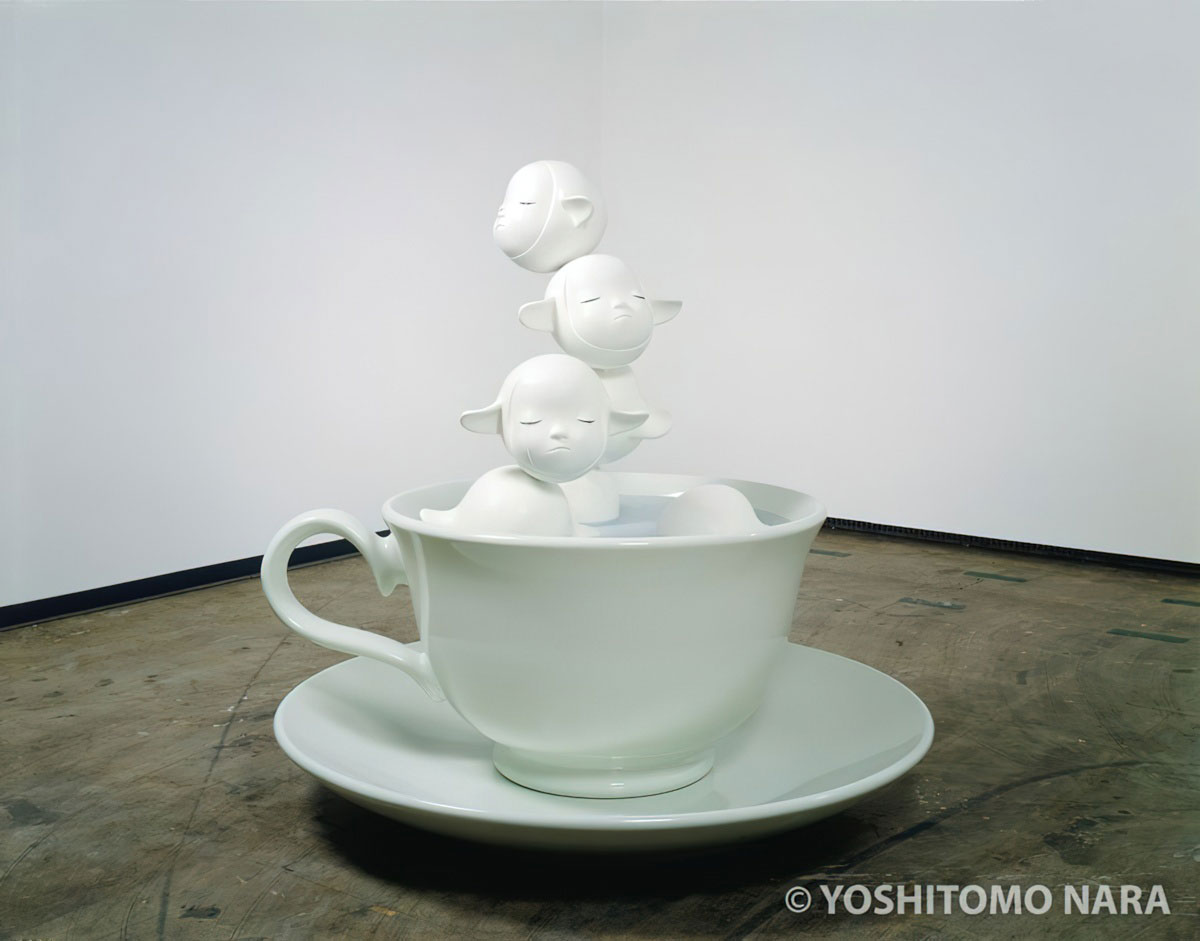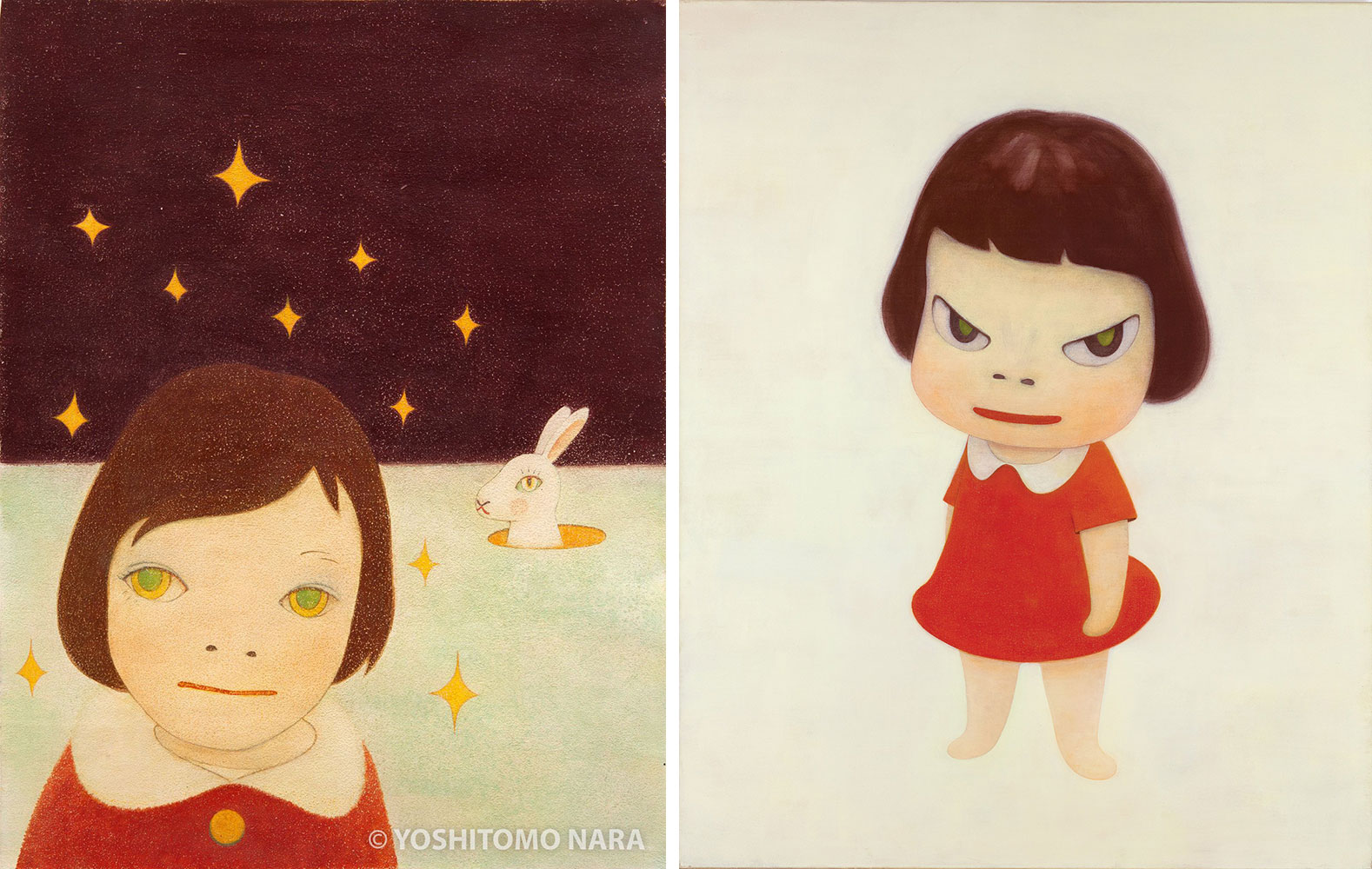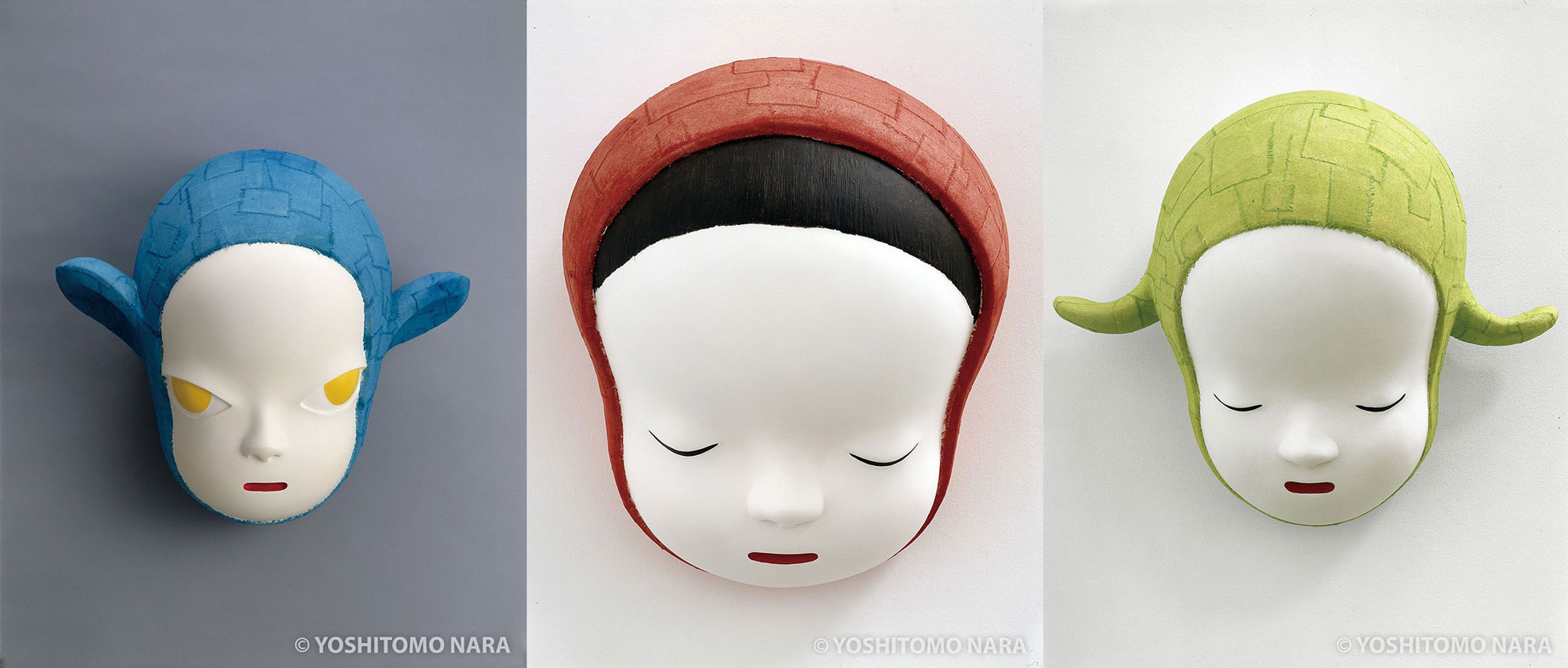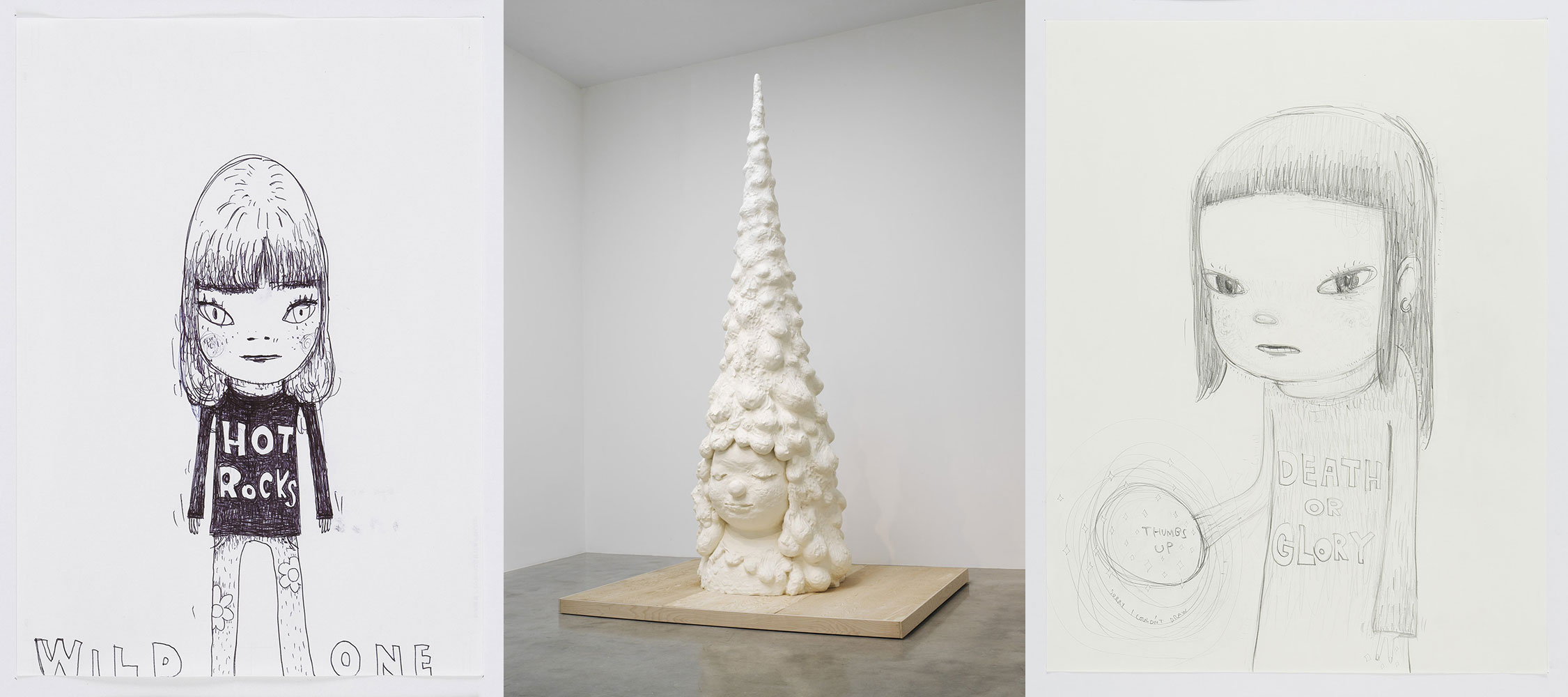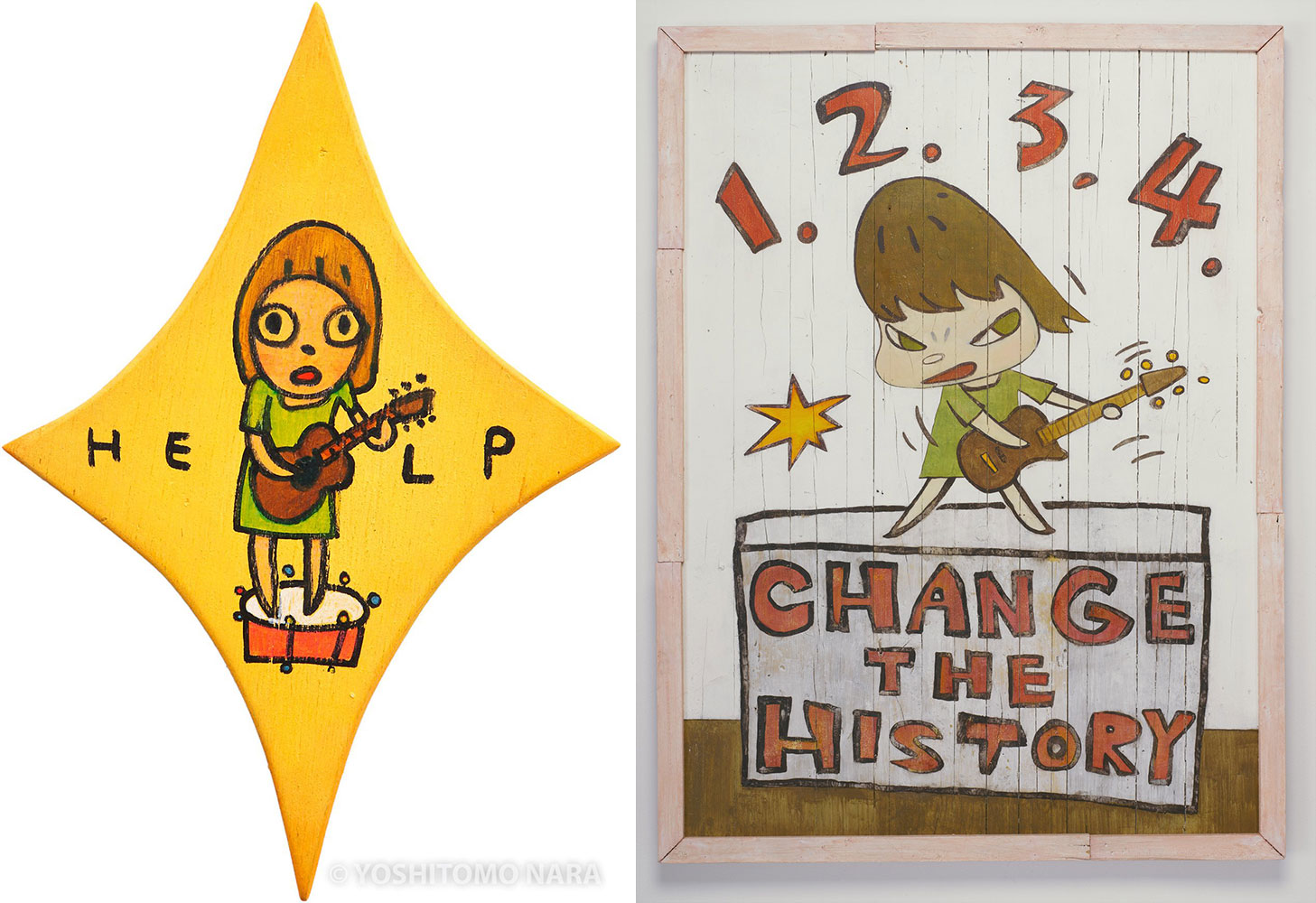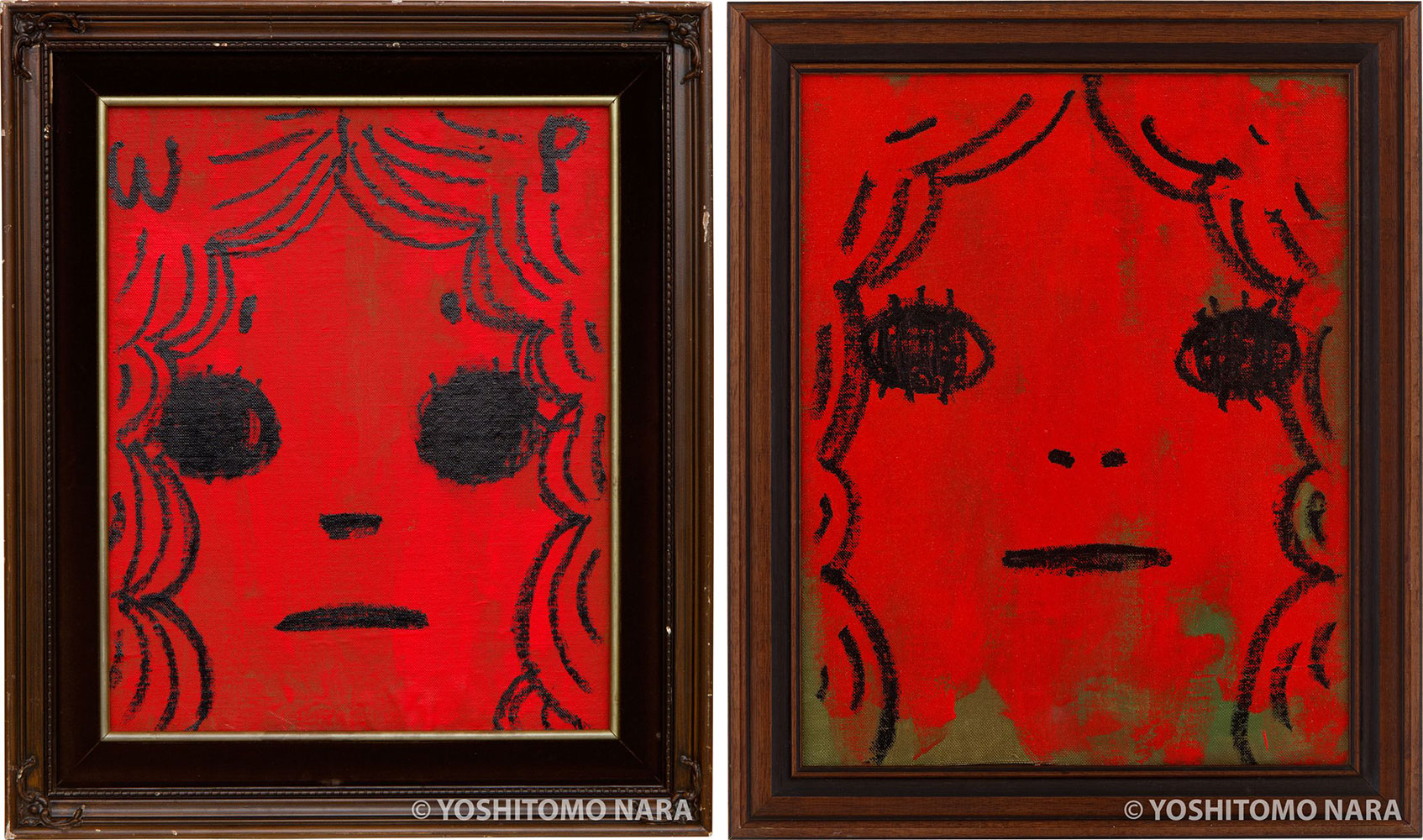TRACES: Yoshitomo Nara
 Today is the occasion to bear in mind Yoshitomo Nara (5/12/1959- ), he is a pioneering figure in contemporary art whose signature style (which expresses children in a range of emotional complexities from resistance and rebellion to quietude and contemplation) celebrates the introspective freedom of the imagination and the individual. This column is a tribute to artists, living or dead, who have left their mark in Contemporary Art. Through documents or interviews, starting with: moments and memories, we reveal out from the past-unknown sides of big personalities, who left their indelible traces in time and history…
Today is the occasion to bear in mind Yoshitomo Nara (5/12/1959- ), he is a pioneering figure in contemporary art whose signature style (which expresses children in a range of emotional complexities from resistance and rebellion to quietude and contemplation) celebrates the introspective freedom of the imagination and the individual. This column is a tribute to artists, living or dead, who have left their mark in Contemporary Art. Through documents or interviews, starting with: moments and memories, we reveal out from the past-unknown sides of big personalities, who left their indelible traces in time and history…
By Efi Michalarou
 Yoshitomo Nara’s exposure to Western music on the American military radio station Far East Network in Honshu influenced his artistic imagination at an early age. He would later provide cover art for bands including Shonen Knife, R.E.M., and Bloodthirsty Butchers. Nara purchased records by mail, sharing the cost with friends. At the age of sixteen he opened up a cafe with a friend in his hometown, and worked as the DJ there. He was inspired, not only by the rebellious ethos communicated through punk music, but also by the visual culture of music. He received his B.F.A. (1985) and an M.F.A. (1987) from the Aichi Prefectural University of Fine Arts and Music. Between 1988 and 1993, Nara studied at the Kunstakademie Düsseldorf, in Germany. In 1987, completed master’s degree program at Aichi University of the Arts. Moved to Germany in 1988 and enrolled at Kunstakademie Düsseldorf. Known for powerful portraits with eyes that gaze back at the viewer; drawing works produced daily; three-dimensional works in wood, FRP, ceramic, and bronze; and installations of little houses. A series of collaborative projects in the late 1990s – including a book project with Japanese cult novelist Banana Yoshimoto, as well as commissions to design a CD jacket for Japanese punk band The Star Club, and for Japanese girl band Shonen Knife – propelled Nara into the public eyes. A year after Nara’s return to Japan in 2000, his seminal solo exhibition titled “I DON’T MIND, IF YOU FORGET ME” was mounted at the Yokohama Museum of Art and displayed Nara’s extensive multidisciplinary approach to artmaking. In addition to stuffed animals, sculptures, paintings, and drawings, the artist presented “Fountain of Life” (2001), a ceramic sculpture featuring running water, and “Time of My Life” (2001), his “drawing room” installation built out of plywood, lit with bare lightbulbs, and filled with drawings on paper and various ephemera. This installation would anticipate a series of collaborations with the design collective graf, such as “Yoshitomo Nara + graf: Torre de Málaga” (2007), a site-specific installation at the Centro de Arte Contemporáneo de Málaga in Spain. “Torre de Málaga”, a towering house, was built out of industrial and waste materials collected from the city and included the work “1.2.3.4, Change the History” (2007), which Nara painted on site and mounted onto the tower. Evoking Nara’s spirit of collaboration and existential introspection, the exhibition carried an implicit criticism of the effects of industrialization and globalization. In 2011, the Great East Japan Earthquake and Tsunami greatly affected Nara’s worldview and impacted the work he made after that time. Still bearing the style he had developed throughout his oeuvre, this later work marked a thoughtfulness and pathos that seemed to reflect on themes such as impermanence, temporality, beauty, and the present. In the “Milky Lake/Thinking One” (2011), the first painting he made after the disaster, exudes the meditative and thoughtful figures that marked a shift in his practice. Nara’s work spans painting, drawing, photography, large-scale installations, and sculpture in ceramic, bronze, and fiber-reinforced plastic. Influenced by popular music, memories of childhood, and current events, he filters these references through an exploratory realm of feelings, loneliness and rebelliousness especially, which span autobiographical as well as broader cultural sensibilities. The figures in Nara’s paintings are the result of the artist facing the deepest part of his soul; with color and composition based in painting theory, repeatedly layering and erasing color from the canvas, so that what remains in the end is only the most earnest part that could not be pared away. In contrast, his drawings are distanced from theory. Using materials with which he feels a familiarity, such as torn-off note paper or used envelopes, he bares his emotions and thoughts. In his three-dimensional works, for which he has varied his media over the years, Nara gives familiar items new life through a meditative dialogue with the materials. His photography has begun to have fully-fledged presentations in recent years. For these photographic works, he discovers raw beauty in everyday landscapes and moments from his work or travels that could easily be overlooked, and records them as something precious. Nara’s works contain everything that he encompasses. Memories etched into the depths of his soul; and the music, paintings, literature he encountered organically by following his curiosity, that inspired his spirit and sensibilities — these are all accumulated in countless layers. For example, he has been greatly influenced by the music he began listening to at 9 years old. Most of it was in a foreign language, but young Nara used his imagination to overcome the language barrier. He recreated the landscape of the music within himself using the record jackets, and sought to understand the piece as if he himself lived in that world. Nara creates his works directly and freely, bound by nothing. These works transcend barriers of language, cultural backgrounds, and eras; they are beloved by many people. The artist confronts the true essence of people and things, and is invariably honest; resulting in works that are like mirrors that reflect the viewers’ hearts back to them. In recent years, he has actively sent out his message on Twitter and Instagram, and regardless of where he may be in the world, he is connected with his friends in real time. And Nara is a traveler, in the truest sense of the word. At times he sets out on a voyage seeking his own roots. At other times, feeling a strong attraction to the spark of cultures that have persisted through the trials and tribulations of history, he visits and explores their lands. Treasuring the human relationships he has built through these encounters, he visits all kinds of places without being confined to the paradigm of art; like a traveling bard, he creates and presents his work for friends across the world.
Yoshitomo Nara’s exposure to Western music on the American military radio station Far East Network in Honshu influenced his artistic imagination at an early age. He would later provide cover art for bands including Shonen Knife, R.E.M., and Bloodthirsty Butchers. Nara purchased records by mail, sharing the cost with friends. At the age of sixteen he opened up a cafe with a friend in his hometown, and worked as the DJ there. He was inspired, not only by the rebellious ethos communicated through punk music, but also by the visual culture of music. He received his B.F.A. (1985) and an M.F.A. (1987) from the Aichi Prefectural University of Fine Arts and Music. Between 1988 and 1993, Nara studied at the Kunstakademie Düsseldorf, in Germany. In 1987, completed master’s degree program at Aichi University of the Arts. Moved to Germany in 1988 and enrolled at Kunstakademie Düsseldorf. Known for powerful portraits with eyes that gaze back at the viewer; drawing works produced daily; three-dimensional works in wood, FRP, ceramic, and bronze; and installations of little houses. A series of collaborative projects in the late 1990s – including a book project with Japanese cult novelist Banana Yoshimoto, as well as commissions to design a CD jacket for Japanese punk band The Star Club, and for Japanese girl band Shonen Knife – propelled Nara into the public eyes. A year after Nara’s return to Japan in 2000, his seminal solo exhibition titled “I DON’T MIND, IF YOU FORGET ME” was mounted at the Yokohama Museum of Art and displayed Nara’s extensive multidisciplinary approach to artmaking. In addition to stuffed animals, sculptures, paintings, and drawings, the artist presented “Fountain of Life” (2001), a ceramic sculpture featuring running water, and “Time of My Life” (2001), his “drawing room” installation built out of plywood, lit with bare lightbulbs, and filled with drawings on paper and various ephemera. This installation would anticipate a series of collaborations with the design collective graf, such as “Yoshitomo Nara + graf: Torre de Málaga” (2007), a site-specific installation at the Centro de Arte Contemporáneo de Málaga in Spain. “Torre de Málaga”, a towering house, was built out of industrial and waste materials collected from the city and included the work “1.2.3.4, Change the History” (2007), which Nara painted on site and mounted onto the tower. Evoking Nara’s spirit of collaboration and existential introspection, the exhibition carried an implicit criticism of the effects of industrialization and globalization. In 2011, the Great East Japan Earthquake and Tsunami greatly affected Nara’s worldview and impacted the work he made after that time. Still bearing the style he had developed throughout his oeuvre, this later work marked a thoughtfulness and pathos that seemed to reflect on themes such as impermanence, temporality, beauty, and the present. In the “Milky Lake/Thinking One” (2011), the first painting he made after the disaster, exudes the meditative and thoughtful figures that marked a shift in his practice. Nara’s work spans painting, drawing, photography, large-scale installations, and sculpture in ceramic, bronze, and fiber-reinforced plastic. Influenced by popular music, memories of childhood, and current events, he filters these references through an exploratory realm of feelings, loneliness and rebelliousness especially, which span autobiographical as well as broader cultural sensibilities. The figures in Nara’s paintings are the result of the artist facing the deepest part of his soul; with color and composition based in painting theory, repeatedly layering and erasing color from the canvas, so that what remains in the end is only the most earnest part that could not be pared away. In contrast, his drawings are distanced from theory. Using materials with which he feels a familiarity, such as torn-off note paper or used envelopes, he bares his emotions and thoughts. In his three-dimensional works, for which he has varied his media over the years, Nara gives familiar items new life through a meditative dialogue with the materials. His photography has begun to have fully-fledged presentations in recent years. For these photographic works, he discovers raw beauty in everyday landscapes and moments from his work or travels that could easily be overlooked, and records them as something precious. Nara’s works contain everything that he encompasses. Memories etched into the depths of his soul; and the music, paintings, literature he encountered organically by following his curiosity, that inspired his spirit and sensibilities — these are all accumulated in countless layers. For example, he has been greatly influenced by the music he began listening to at 9 years old. Most of it was in a foreign language, but young Nara used his imagination to overcome the language barrier. He recreated the landscape of the music within himself using the record jackets, and sought to understand the piece as if he himself lived in that world. Nara creates his works directly and freely, bound by nothing. These works transcend barriers of language, cultural backgrounds, and eras; they are beloved by many people. The artist confronts the true essence of people and things, and is invariably honest; resulting in works that are like mirrors that reflect the viewers’ hearts back to them. In recent years, he has actively sent out his message on Twitter and Instagram, and regardless of where he may be in the world, he is connected with his friends in real time. And Nara is a traveler, in the truest sense of the word. At times he sets out on a voyage seeking his own roots. At other times, feeling a strong attraction to the spark of cultures that have persisted through the trials and tribulations of history, he visits and explores their lands. Treasuring the human relationships he has built through these encounters, he visits all kinds of places without being confined to the paradigm of art; like a traveling bard, he creates and presents his work for friends across the world.
